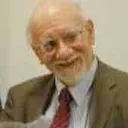Stay in the Loop
BSR publishes on a weekly schedule, with an email newsletter every Wednesday and Thursday morning. There’s no paywall, and subscribing is always free.
The case for complexity
Philadelphia Classical Symphony at Holy Trinity

The composer Maurice Wright ran up a big score when the Network for New Music unveiled his Darwiniana in February. Wright is noted for his interest in electronic and mixed media work, and Darwiniana is an effective melding of music and visuals. Wissahickon Scenes, his new work for Karl Middleman's Classical Symphony, proves he can be just as effective when he limits his resources to a standard string orchestra, a single harp and a solo violin.
Wissahickon Scenes is the third entry in a series of Classical Symphony commissions devoted to the history and culture of the Lenape Indians— the original inhabitants of the land we crisscross when we bustle around 21st-Century Philadelphia. Wright sticks to the standard fast-slow-fast pattern of the classic violin concerto, but the three movements all bear some relation to the Lenape, who have maintained their traditions and some of their tribal structure through all these centuries.
Wright builds his first movement around a collection of five Lenape dances; his second movement, "Vale of Tears," refers to the tribe's long, slow retreat from its ancestral lands; and his third, "The (Invisible) People," is a complex mixture of many elements, with the voice of the Lenape breaking through near the end.
Appalachian immigrant dances
Wissahickon Scenes created an instructive contrast with the program's closing item, Mark O'Connor's 1986 Strings and Threads. O'Connor's work is essentially a collection of 13 folk and popular pieces that follow the history of the Irish immigrants who settled in the Appalachians. It begins with a reel from an Irish fair, continues with three sailors' dances, and moves from the dances of the first settlers to the music of the blues, ragtime and swing eras.
It's an enjoyable piece that made a nice ending to a notable evening. The violin soloist, Jason DePue, proved he could have made a good living in any section of the Appalachians in any era. But Strings and Threads is a straightforward orchestration of the individual pieces— an anthology arranged for string orchestra and violin soloist.
A more demanding solo
Wissahickon Scenes is more powerful and musically interesting because Wright transformed his material into a far more complex work, with a more complicated texture. It would sound just as powerful if you didn't know it had anything to do with the Lenape and listened to it as pure music, with no specific referents.
The solo role in Wright's work is more mesmerizing than the solo part in Strings and Threads because it's more demanding, with a cadenza that's a virtuoso display in the grand manner. Wright remarked in his introduction that the violinist Hirono Oka impressed him when he worked on Darwiniana with the Network for New Music, and he took full advantage of her abilities.
BSR contributors have recently registered their opinions on performers who put too much body language into their performances. (See, for example, "When musicians can't sit still," by Maria T. Corley.) Hirono Oka is a good example of a performer who focuses her energies on the job at hand. The sight of a master violinist standing erect amid a storm of difficulties should satisfy any knowledgeable observer's appetite for drama.
One of America's first
Conductor Middleman filled out the evening with two other works that deserve mention. David Diamond's Rounds for String Orchestra (1944) uses the round and other musical devices to add complexity to two lively fast movements and a slow movement that cycles between measured solemnity and gently evocative melodies.
Middleman's arrangement of the final movement of a 1789 string quintet by the Moravian composer Johann Friedrich Peter was an advertisement for the work of one of America's first composers. Peter (1746-1813) composed the original quintet in the style of the Mozart-Haydn era, and it should please anyone who likes Haydn's best chamber music.
Critics and music historians often write as if music was a branch of engineering and composers are worth listening to only if they made some great advance in style or technique. But we don't listen to music merely because the composer added an innovation to the art. We listen to it because it sounds good— because it creates a satisfying emotional and aesthetic experience. Peter placed his own individual stamp on the style of his time and produced his own version of a lively, cheerful movement. If the rest of his work is this good, we should see his byline on more programs.
Wissahickon Scenes is the third entry in a series of Classical Symphony commissions devoted to the history and culture of the Lenape Indians— the original inhabitants of the land we crisscross when we bustle around 21st-Century Philadelphia. Wright sticks to the standard fast-slow-fast pattern of the classic violin concerto, but the three movements all bear some relation to the Lenape, who have maintained their traditions and some of their tribal structure through all these centuries.
Wright builds his first movement around a collection of five Lenape dances; his second movement, "Vale of Tears," refers to the tribe's long, slow retreat from its ancestral lands; and his third, "The (Invisible) People," is a complex mixture of many elements, with the voice of the Lenape breaking through near the end.
Appalachian immigrant dances
Wissahickon Scenes created an instructive contrast with the program's closing item, Mark O'Connor's 1986 Strings and Threads. O'Connor's work is essentially a collection of 13 folk and popular pieces that follow the history of the Irish immigrants who settled in the Appalachians. It begins with a reel from an Irish fair, continues with three sailors' dances, and moves from the dances of the first settlers to the music of the blues, ragtime and swing eras.
It's an enjoyable piece that made a nice ending to a notable evening. The violin soloist, Jason DePue, proved he could have made a good living in any section of the Appalachians in any era. But Strings and Threads is a straightforward orchestration of the individual pieces— an anthology arranged for string orchestra and violin soloist.
A more demanding solo
Wissahickon Scenes is more powerful and musically interesting because Wright transformed his material into a far more complex work, with a more complicated texture. It would sound just as powerful if you didn't know it had anything to do with the Lenape and listened to it as pure music, with no specific referents.
The solo role in Wright's work is more mesmerizing than the solo part in Strings and Threads because it's more demanding, with a cadenza that's a virtuoso display in the grand manner. Wright remarked in his introduction that the violinist Hirono Oka impressed him when he worked on Darwiniana with the Network for New Music, and he took full advantage of her abilities.
BSR contributors have recently registered their opinions on performers who put too much body language into their performances. (See, for example, "When musicians can't sit still," by Maria T. Corley.) Hirono Oka is a good example of a performer who focuses her energies on the job at hand. The sight of a master violinist standing erect amid a storm of difficulties should satisfy any knowledgeable observer's appetite for drama.
One of America's first
Conductor Middleman filled out the evening with two other works that deserve mention. David Diamond's Rounds for String Orchestra (1944) uses the round and other musical devices to add complexity to two lively fast movements and a slow movement that cycles between measured solemnity and gently evocative melodies.
Middleman's arrangement of the final movement of a 1789 string quintet by the Moravian composer Johann Friedrich Peter was an advertisement for the work of one of America's first composers. Peter (1746-1813) composed the original quintet in the style of the Mozart-Haydn era, and it should please anyone who likes Haydn's best chamber music.
Critics and music historians often write as if music was a branch of engineering and composers are worth listening to only if they made some great advance in style or technique. But we don't listen to music merely because the composer added an innovation to the art. We listen to it because it sounds good— because it creates a satisfying emotional and aesthetic experience. Peter placed his own individual stamp on the style of his time and produced his own version of a lively, cheerful movement. If the rest of his work is this good, we should see his byline on more programs.
What, When, Where
Philadelphia Classical Symphony: O’Connor, Appalachia Waltz and Strings and Threads; Wright, Wissahickon Scenes; Peter, String Quintet in D Major, Finale, arranged by Karl Middleman; Diamond, Rounds for String Orchestra. Hirono Oka, Jason DePue, violin; Janet Witman, harp; Karl Middleman, conductor. May 21, 2010 at Church of the Holy Trinity, Rittenhouse Square. (215) 228-2224 or www.classicalsymphony.org.
Sign up for our newsletter
All of the week's new articles, all in one place. Sign up for the free weekly BSR newsletters, and don't miss a conversation.

 Tom Purdom
Tom Purdom